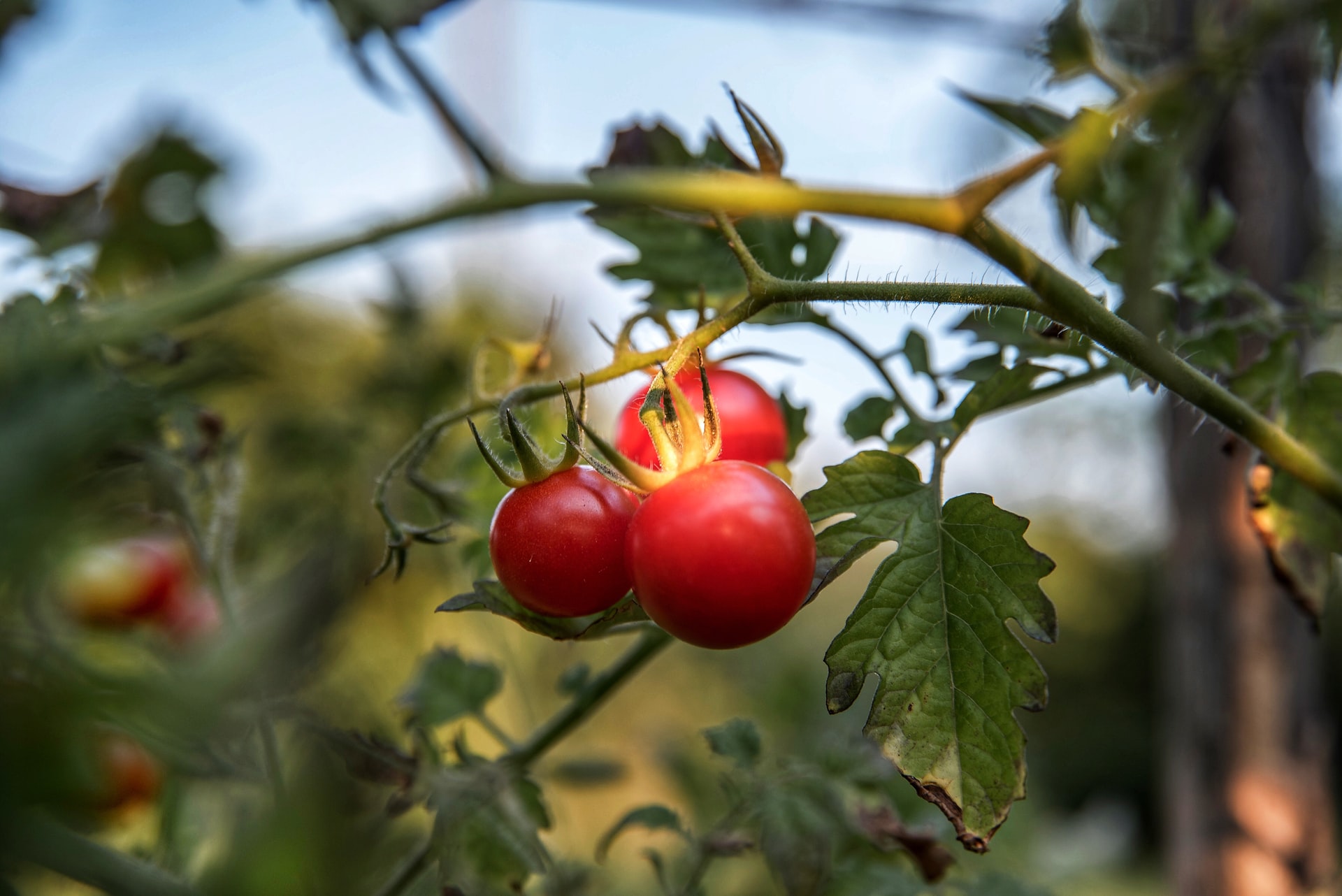The tomato is an annual herbaceous plant. The majority of the tomato’s root system is located at a depth of about 30 cm, but the main root can reach a depth of 1 meter and can spread up to 1.5 meters in diameter.
The stem, lacking sclerenchyma, tends to bend under the weight of leaves and fruits without support. It is herbaceous, about 2 cm in diameter at the base, and covered with hairs. There are two basic types of stems: indeterminate (tall) and determinate (short or bushy).
Indeterminate (Undefined) Growth Type
The stem can reach several meters in length, with the vegetative tip remaining active as long as favorable conditions persist. After the first flower cluster, usually three leaves develop, followed by a second flower cluster, then another three leaves, then a third flower cluster, and so on. Secondary branches, which should be removed (pinching), develop from the leaf axils. If not removed, these secondary branches will have the same arrangement of flower clusters and leaves.
Determinate (Defined) Growth Type
The stem height ranges from 0.5 to 1 meter. After the first flower cluster, one or two leaves develop, followed by a second flower cluster, which may be the last on the main branch. The main stem can end with a third flower cluster. Secondary branches develop from the leaf axils with the same arrangement of leaves and flowers as on the main stem. These branches are not pinched, giving the plant a “bushy” appearance. As several secondary branches develop simultaneously, flowering and fruit development occur proportionally, which is advantageous for tomatoes intended for the canning industry as it allows for single-time mechanized harvesting.
The tomato leaf is pinnately compound with an uneven number of leaflets on a long petiole, up to 50 cm in length. The leaflets are of various sizes, serrated, wrinkled, and hairy.
The first flower cluster appears after 5 – 9 leaves and can be simple (with 7 – 12 flowers) or compound (with a significantly larger number of flowers than in a simple cluster). Flowers develop from the base upwards, so on one cluster, there can be both fully developed fruits and newly opened flowers at the same time. The flower is bisexual.
The fruit is a berry consisting of flesh (pericarp wall + skin) and pulp (placenta + seeds + gelatinous tissue around the seeds that fill the chambers). Fruits vary in shape, size, and color depending on the cultivar. Colors range from red to orange to yellow.
By size, fruits can be classified as:
- Very large – over 10 cm in diameter
- Large – between 8 and 10 cm
- Medium – between 5 and 8 cm
- Cocktail – between 3 and 5 cm
- Very small (cherry) – less than 3 cm
Various fruit shapes include:
- Heart-shaped
- Flattened
- Round (like an apple)
- Oval (like a plum)
- Ribbed
- Pear-shaped
The seed is flattened and oval, 5 mm long, 4 mm wide, and 2 mm thick, covered with dense hairs. One gram can contain 250 – 350 seeds.













































